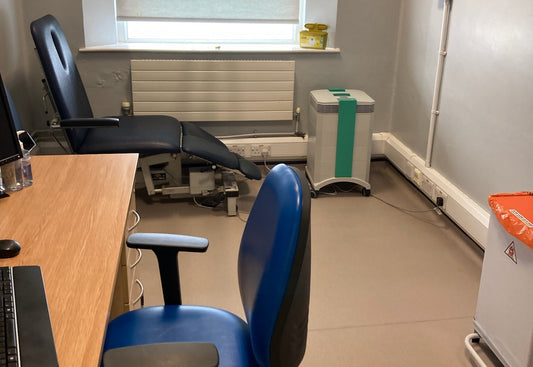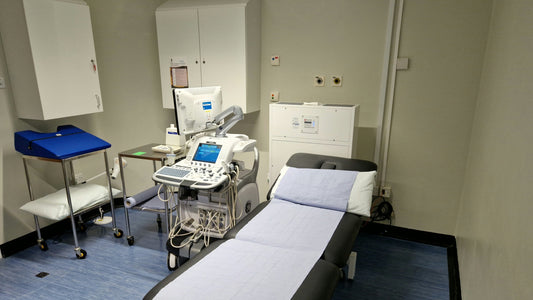The world of dentistry has never been busier! Dental health has improved dramatically with falling rates of tooth decay and attention has now shifted to the needs of an ageing population, with increased emphasis upon aesthetics – that is, having a full set of sparkling white teeth. Therefore, dental technologists spend much of their time in the lab creating cosmetic dental prostheses such as crowns and implants. This work creates dust and chemical fumes. Without proper protection, exposure to these may risk the health of the dental technologist.
The processes involved in building any kind of dental prosthesis have a number of stages where there is a potential health hazard to the dental technologist. First, the dentist makes a mould of the patient’s mouth or teeth which the dental technologist uses to make a plaster model. This is used to make up a metal framework for the prosthesis onto which porcelain is overlaid, using a sandblasting technique. After baking the metal-porcelain layers, there is grinding to achieve the required shape.
This series of operations encompasses not just exposure to chemical hazards, which will be discussed elsewhere, but also the generation of dust particles of various compositions and sizes. Research has shown us that the dust from the types of materials that are used in dental technology contain between 54-70 per cent of respirable particles (that is, particles of less than 5 microns in size that enter the lungs). A particular concern is the silica content of this dust, which can reach 30 per cent and may exceed maximum recommended levels during the sandblasting and grinding processes. Another is exposure to dust from heavy metals like the cobalt-chromium-molybdenum alloys. Both exposures may lead to a lung condition known as pneumoconiosis, of which several cases have been reported as being linked to dental technology.
There have also been a number of cases of silicosis, a well-known and very serious occupational lung disease that is caused by inhaling respirable crystalline silica dust. These have been highlighted in the United States Center for Disease Control’s publication Morbidity and Mortality Weekly Reports (MMWR). Traditionally, silicosis is associated with the mining, quarrying and ceramics industries. However, it appears that the materials and processes used in dental laboratories put those who work there at risk of the condition. According to MMWR, occupational disease surveillance in five states found nine cases of silicosis among dental technologists. The case reports are revealing of the importance of protection against dust in the dental lab – as follows:
- Case 1 – worked 46 years in a dental lab, exposed to dust, cobalt and chemicals and never wore a respirator. Died of respiratory failure, pathology report showed silicosis.
- Case 2 – worked as a dental technologist for 30 years, exposed to various mineral and metallic dust. The pathology report showed silicosis, as well as asbestosis and berylliosis. Asbestosis is caused by exposure to asbestos which was once commonly used in the dental laboratory, while berylliosis is caused by exposure to the toxic metal beryllium which is a component of some of the alloys used in dental prostheses.
- Case 3 – died of renal failure, pathology showed silicosis. Worked for 28 years in dental labs and never wore a respirator or used an air cleaner for dental technicians, while exposed to various dust when carrying out sandblasting processes.
A comment on this MMWR report notes that exposure to respirable crystalline silica in the dental lab occurs through procedures generating airborne dust such as:
- Mixing powders
- Removing castings from moulds
- Finding and polishing castings and porcelain
- Using silica sand for abrasive blasting.
In general, the smaller the particle the more likely it is to damage health. Of particular concern are the ultra-fine particles (UFPs) which have a size in the nano range – that is less than 0.1 microns, or 100 nanometers. A recent study analysed the size range of particle which dental technologists may come into contact with during the course of their work. A number of blocks of composites used in dental prostheses were ground and the dust thus generated analysed. All of the composites released a certain amount of respirable dust. The size range of this dust extended down to the UFP level, showing that a potential health hazard exists in the dental laboratory setting.
The good news is that it is very easy for dental technologists to capture much of this dust pollution before being inhaled. High-quality dental technician air cleaning systems can make a significant improvement to air quality and help to create a healthier and cleaner work environment. To discover how, contact one of Commercial Air Filtration's experts on 0203 176 0524, or info@commercialairfiltration.co.uk.




